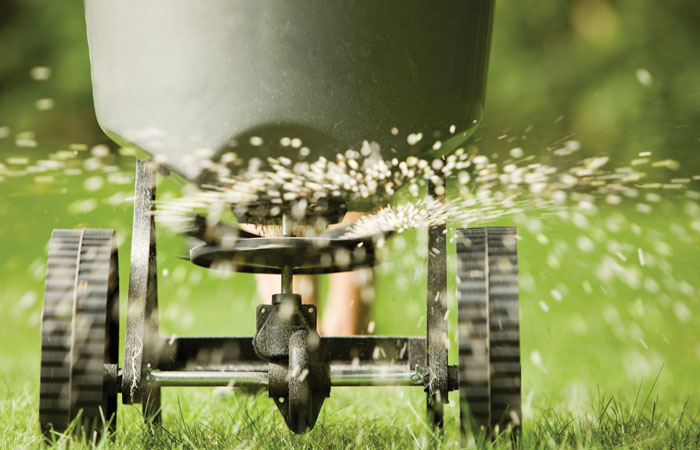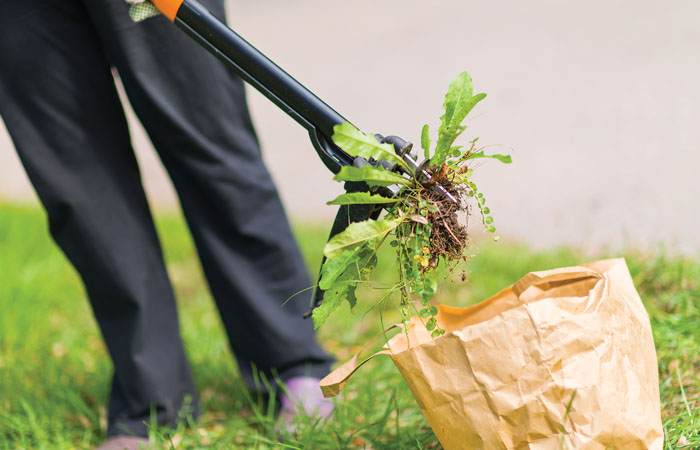Welcome Avid Golfers to the post-summer celebration that has some of the best golfing conditions of the year, namely the month of October. Around the club these days, there is a lot of talk about how hot the summer was … this naturally leads to the obvious speculation of how cold the winter will be. You may recall that the last two winters in North Texas have brought us some severe winter weather. The Valentine’s Day winter storm of 2021 gave us a negative 2 degrees low temperature with a negative 18 windchill factor. Many plants and trees were killed or severely damaged, but there are some plants and strategies that can ensure a beautiful and functional landscape/garden even in the winter. So, this month’s Ask the Superintendent question is, what are some basic tips and advice for my winter landscape and garden? Let’s answer the question, and I promise to give you some plant recommendations at the end.
Plant Winter Hardiness
Zones and the USDA
The United States Department of Agriculture (USDA) was created on May 15, 1862, by President Abraham Lincoln. The USDA is made up of 29 agencies and offices with nearly 100,000 employees who serve the American people at more than 4,500 locations across the country and abroad. But for our purposes today, we will be referencing the USDA work on Plant Winter Hardiness Zones. These zones establish the historic average low temperatures in a given area and match a plant’s cold tolerances to theses respective zones.
The USDA has a very helpful website on the topic at planthardiness.ars.usda.gov, where you can just enter your zip code and find out which hardiness zone you are in. DFW is in Zone 8a to save you some time, which means our average low winter temperature is between 10-15 degrees Fahrenheit and 12.2 and negative 9.4 degrees Celsius. Plants hardy to zone 8a are obviously our best choices. But as avid gardeners we like to push the limits, so given a few tools and tricks, we can often keep more tropical plants alive even if we are tested at times by extreme cold weather. Be sure when buying plants online or in person to confirm the recommended USDA plant hardiness zone; it will usually be listed on the plant information label in each container.
Frost, Light Freezes, Hard
Freezes and Plant Covers
A frost is when we get a visible frost or freezing moisture on the plant surface but the plant tissue is not completely frozen through. Frosts last only a short time. Frosts generally do not harm plants unless you walk on or contact the plant while frost is present, then there can be serious damage; thus, why we have frost delays on putting greens. A freeze is when the air temperature actually drops below freezing. Sometimes we get frost when the temperatures are still slightly above freezing and we often have a freeze without frost. It all has to do with the amount of water in the air. A light freeze is between 30- and 32-degrees Fahrenheit, a hard freeze is anything below 28 degrees Fahrenheit, and the longer the duration, the worse the potential damage.

Most golf courses with Bermuda grass putting greens will cover their greens to protect the grass from cold damage any time a hard frost is predicted and leave them covered until temperatures are safely above freezing. Flowers and plants that are sensitive to cold can also be covered to protect them from cold exposure, thus allowing us to have plants that are bit more tropical farther north. For example, my fig tree has been covered multiple times during the winter and is still going strong.
Fabric coverings work best because as they allow moisture to escape while still protecting your plants from frost/cold. Fabric coverings will prevent the freezing air from coming into direct contact with the moisture on the plant, while also capturing the heat that is radiating from the ground. Some brands of plant covers include Shrub Jacket, Dewitt and Agworth. Bed sheets or comforters can be used in a pinch for large plants and shrubs. Some cover is better than no cover is a good rule. Newspaper can be used on low-growing foliage, but it can often be difficult to get it to stay in place. However, sod staples work great for this. I have used old pillow cases, sheets, towels and even cardboard boxes. Just be sure that whatever you use to cover your plant, the cover reaches the ground and traps the warm air inside the canopy. Use sod staples, mulch or rocks to secure your covers as, usually, the wind comes with the cold, so plan accordingly. Lastly, remember the more layers of cover you use, the better the insulation provided. So, you can feel free to cover valuable or tender plants under more than one cover, especially during severe freezes.
No matter what you use, it is important to uncover the plant after the threat of frost/freeze has passed so the plant can get light as well as to prevent heat buildup under the canopy once the sun comes out. Weather forecasts are key to getting prepared and protecting at-risk plants, so get an app or watch the local TV weather reporter and raise your winter garden game.
Our Favorite North Texas
Winter Flowers & Plants
Now for the moment you have been waiting for, here are some of our favorite North Texas winter flowers/plants. Note that many varieties are sold as a mix of primary colors if you prefer a variety of colors.
Dianthus: These plants are great winter choices, but be aware they won’t bloom heavily during the heart of winter. When they do bloom, though, they are vibrant, especially in late winter/early spring. We prefer the Ideal Select Series Dianthus (Mix, Red, Violet and White).
Dusty Miller: While more noted for its silver/grey foliage, it’s winter hardy and can last several seasons, providing year-round beauty. If unpruned, it will produce a yellow flower. Our favorite variety is Silver Dust followed by New Look.
Ornamental Cabbage, Kale and Chard: These foliage beauties are welcome splashes of color and texture. Our favorites include Cabbage (Osaka Red), Kale (Coral Prince, Nagoya Red), Swiss Chard (Bright Lights).
Pentas: These can be great plants in the right location. Although Pentas are typically cold damaged to some degree during winter, they often survive the cold (temperatures in the teens can kill them, so covering on cold nights is recommended). You can cut back the freeze-damaged parts in the spring, and they will sprout from lower parts to grow and bloom another season. Some of our favorite Pentas include Butterfly Deep Pink or Red, and the taller Kaleidoscope and Northern Lights series offer many bloom colors,
as well.

Snap Dragon: Unique flowers available in many colors. Our favorites include Snaptini Series (Mix and White), Snapshot Series (Burgundy Bi-color, Orange/Yellow) and Speedy Sonnet Series (Crimson, Pink and Yellow).
Violas and Pansies: All pansies are actually violas, but violas tend to have smaller blooms than pansies as a general rule. Some of our favorite varieties include Trailing Pansies (Cool Wave and Freefall Series), Large Pansies or Colossus Series (Deep Blue and Yellow Blotch), Delta Series Pansy (White, Violet, Red and Pure Yellow), Colormax Series Viola (Purple Glow and Blue Icy), Sorbet XP Series Viola (True Blue, Red Blotch and Deep Orange).
Winter vegetables are also great! Purple-top turnips, mustard greens and edible cabbage, to name a few!
There are many more winter plants and cultivars to choose from, and they are available at your local nursery or garden center. Best of luck in your winter garden … and remember to make time to play lots of golf, even as the days get shorter.
Anthony L. Williams, MG, CGCS, CGM is the Director of Golf and Landscape Operations at the TPC Four Seasons Golf and Sports Club Dallas at Las Colinas, he is an award-winning environmental author with a degree in horticulture. Anthony can be reached at anthony.williams@fourseasons.com.